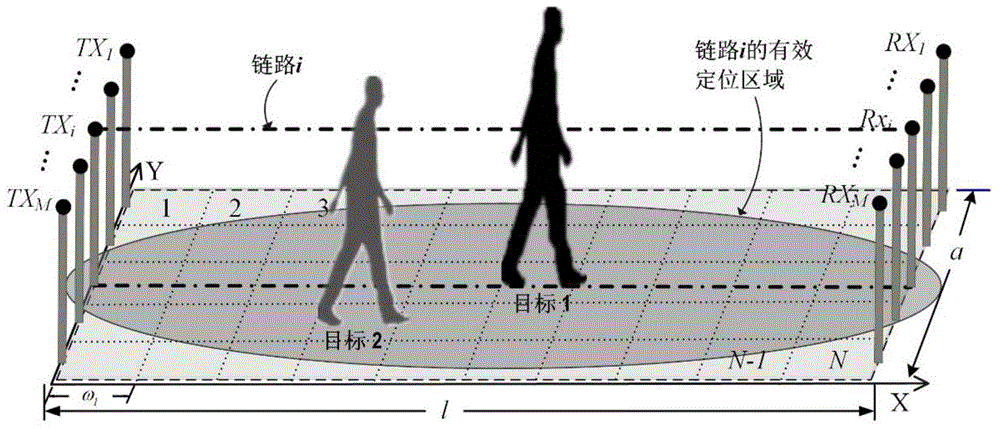Device-free localization method based on space migration compressive sensing
A technology of compressed sensing and positioning methods, applied in positioning, measuring devices, instruments, etc., can solve the problems of high manpower consumption, unrealistic positioning models, and positioning models that cannot be used in new areas of different sizes
- Summary
- Abstract
- Description
- Claims
- Application Information
AI Technical Summary
Problems solved by technology
Method used
Image
Examples
Embodiment 1
[0068] The present invention provides a passive positioning method based on spatial migration compressed sensing, such as figure 1 As shown, the passive positioning method based on spatial migration compressed sensing includes:
[0069] Step 1, respectively deploy sensor nodes in the sample area and the area to be monitored;
[0070] Step 2, collect the RSS matrix at the reference position in the sample area and the area to be monitored by the sensor node;
[0071] Step 3, obtaining a transfer function according to the RSS matrix of the sample area and the area to be monitored;
[0072] Step 4, collect sample RSS values in the sample area through the sensor nodes, and combine the sample RSS values into a perception matrix;
[0073] Step 5, collect the positioning RSS value in the area to be monitored through the sensor node, and combine the positioning RSS value into a measurement vector;
[0074] Step 6: Migrate the perception matrix of the sample area and the measurem...
PUM
 Login to View More
Login to View More Abstract
Description
Claims
Application Information
 Login to View More
Login to View More - R&D Engineer
- R&D Manager
- IP Professional
- Industry Leading Data Capabilities
- Powerful AI technology
- Patent DNA Extraction
Browse by: Latest US Patents, China's latest patents, Technical Efficacy Thesaurus, Application Domain, Technology Topic, Popular Technical Reports.
© 2024 PatSnap. All rights reserved.Legal|Privacy policy|Modern Slavery Act Transparency Statement|Sitemap|About US| Contact US: help@patsnap.com










